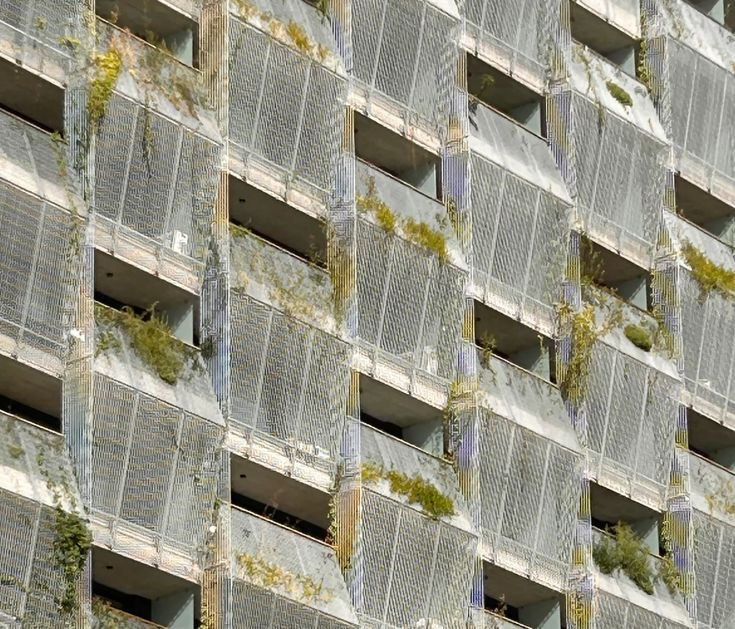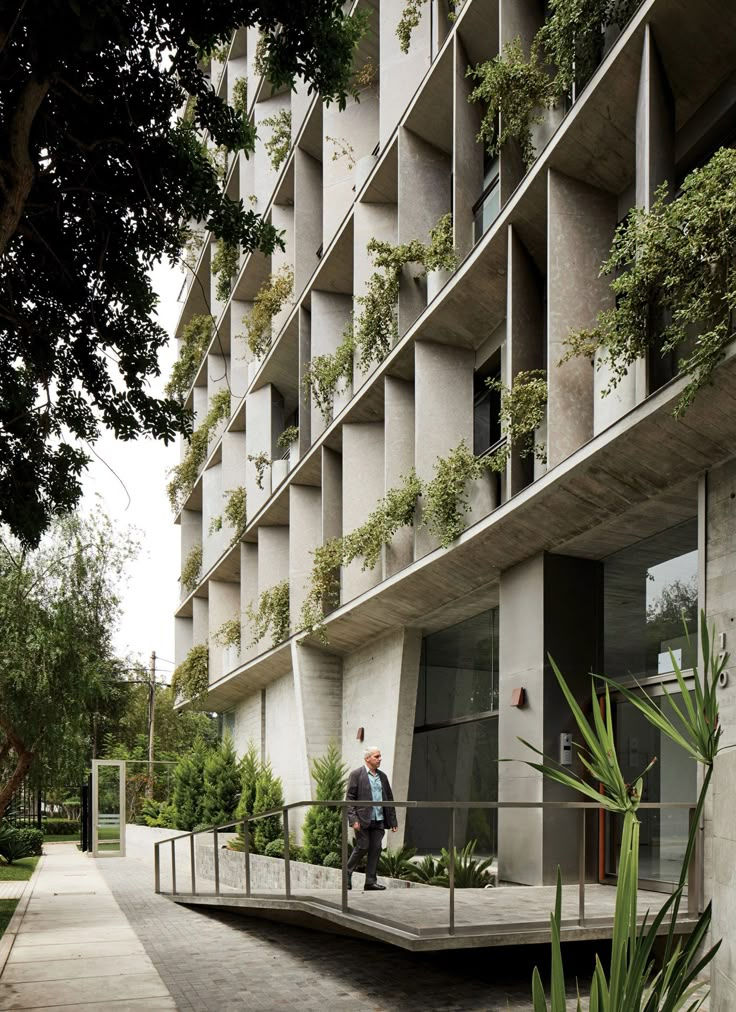Grown to Build: Can You Build a Building Out of Plants?
- arqdiary

- Jun 20
- 4 min read
Living Facades – Cool Look or Real Impact?
The idea of a building literally covered in living plants sounds like something out of a sci-fi movie — green walls climbing up skyscrapers, facades bursting with life, and cities becoming forests. But how much of this is truly sustainable, and how much is just a trendy aesthetic? Today, we’re diving into the world of living facades: what they are, their benefits, their challenges, and whether they actually deliver on their green promises.

What is a Living Facade?
A living facade, also known as a green facade or vertical garden, is a building exterior covered partially or entirely with vegetation. Unlike rooftop gardens or street-level parks, living facades integrate plant life directly onto the building envelope through climbing plants, modular panels, or specialized hydroponic systems.
They’ve been popping up worldwide — from Europe’s eco-conscious cities to innovative projects in Asia and the Americas — promising to blend nature and architecture in a way that combats urban heat, cleans the air, and boosts wellbeing.

The Green Glossary: Types of Living Facades
Before we unpack their impact, it’s good to know the main types of living facades:
Climbing Plant Systems: Vines or creepers planted at the base grow naturally up trellises attached to walls.
Modular Panels: Pre-planted panels fixed to facades, often with irrigation systems.
Hydroponic Walls: Advanced setups where plants grow without soil, fed by nutrient-rich water, often indoors or in controlled environments.

Pros: Why Living Facades Capture Our Imagination
Improved Air Quality: Plants absorb CO₂ and pollutants, helping purify urban air.
Urban Heat Island Mitigation: Vegetation cools the building surface and surrounding air, reducing energy used for air conditioning.
Biodiversity Support: They create habitats for birds, insects, and beneficial microorganisms.
Aesthetic and Psychological Benefits: Greenery is proven to reduce stress, improve mood, and create inviting environments.
Insulation and Energy Savings: Living facades can add a layer of thermal insulation, reducing heating and cooling demands.
Cons: The Realities Behind the Green Curtain
Maintenance Intensive: Plants need regular watering, pruning, and sometimes pest management. Without upkeep, facades can quickly become patchy or die off.
Structural Concerns: Added weight and moisture must be accounted for in design; poorly designed systems can cause damage or leaks.
Water Use: Some systems require significant irrigation, which can be counterproductive in drought-prone areas unless rainwater or recycled water is used.
Cost: Installation and ongoing maintenance costs are higher than traditional facades, which can deter developers.
Effectiveness Varies: Air purification and cooling benefits depend heavily on plant type, density, and climate. In some cases, the impact is more symbolic than substantial.

Mythbusting: Separating Fact from Greenwashing
Myth 1: All green facades drastically cut building energy use.
Reality: While they contribute to insulation and shading, their effect is often supplemental, not transformative. Climate and system design play a huge role.
Myth 2: Living facades are low-maintenance and self-sustaining.
Reality: They require consistent care and technical knowledge to thrive, especially in harsh urban environments.
Myth 3: They’re always the most sustainable choice.
Reality: Sometimes lightweight, highly insulated, non-plant cladding materials with low embodied carbon can outperform living facades in sustainability terms.
Sustainability Impact: When Do Living Facades Make Sense?
Living facades shine when thoughtfully integrated into a project’s broader sustainability strategy:
In hot climates where shading and evaporative cooling are critical.
When paired with rainwater harvesting to reduce irrigation impacts.
On buildings with high visibility and community engagement goals, where the wellbeing benefits are key.
In retrofit projects aiming to improve environmental performance without major structural overhaul.
They are less effective if treated as a simple “green sticker” or purely decorative element without maintenance plans or context-specific design.

🌿 Key Construction Insights: What to Know Before You Build Green
1. Prioritise the Right Planting
Select native, low-maintenance, and drought-tolerant species to reduce long-term water use, increase biodiversity, and minimise upkeep. These species are more resilient and adapted to local conditions, making your green infrastructure more sustainable.
2. Integrate Smart Irrigation Early
Plan for efficient irrigation systems during the design phase. Where possible, utilise rainwater harvesting or greywater reuse to reduce reliance on mains water. Drip systems and smart controls can optimise water usage.
3. Design for Long-Term Access and Maintenance
Ensure green elements—especially on roofs or facades—can be safely accessed for maintenance, inspection, and replacement. This protects the longevity of your investment and avoids costly retrofits later.
4. Use Modular or Prefabricated Systems
Modular green roof or wall systems offer flexibility and ease of installation. They simplify replacement and repairs while supporting phased construction strategies.
5. Engage the Right Expertise Early
Collaborate from the outset with landscape architects, horticulturalists, ecologists, and sustainability consultants. Early input helps align green infrastructure with broader planning, performance, and policy goals.

Final Thoughts: Cool Look or Real Impact?
Living facades are undoubtedly a captivating expression of sustainable architecture — marrying nature with the urban environment in a way that feels fresh and hopeful. However, they are not a silver bullet.
Their true sustainability potential lies in how and where they’re applied, the care taken in design and maintenance, and integration into holistic green strategies.
If you’re dreaming of a greener city skyline, living facades can be a vibrant piece of the puzzle — but remember, the roots of sustainability run deeper than just surface beauty.




Comments